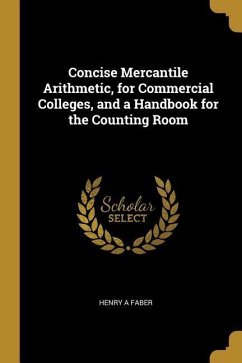
Foreign Devils and Boxers: A Concise History of the U.S. Army's Experience with Combined Interoperability During the Boxer Rebellion in 1900
Versandkostenfrei!
Versandfertig in über 4 Wochen
52,99 €
inkl. MwSt.

PAYBACK Punkte
26 °P sammeln!
This historical case-study investigates and analyzes how the U.S. Army conducted a multinational operation, and to ascertain any legacies the Boxer Rebellion experiences may provide to the way the U.S. Army conducts multinational operations today. This study is limited to an examination of the multinational operation from an interoperability perspective. The international forces in China are analyzed through the specific functions of command, control, coordination, and liaison as articulated in FM 100-8, The Army in Multinational Operations. The 1900 China Relief Expedition affords an opportun...
This historical case-study investigates and analyzes how the U.S. Army conducted a multinational operation, and to ascertain any legacies the Boxer Rebellion experiences may provide to the way the U.S. Army conducts multinational operations today. This study is limited to an examination of the multinational operation from an interoperability perspective. The international forces in China are analyzed through the specific functions of command, control, coordination, and liaison as articulated in FM 100-8, The Army in Multinational Operations. The 1900 China Relief Expedition affords an opportunity to reflect upon the U.S. Army's first multinational operation upon entering the twentieth century. The operation was the first opportunity for the Army to join with combined forces in a campaign since French military support provided the decisive edge for victory during the American Revolution. As such, the operation provides a logical starting point when assessing the overall performance of the U.S. Army as it conducted subsequent multinational or combined operations throughout the remainder of the century. The composition of the international expeditionary forces sent to China in response to the Boxer Rebellion posed significant interoperability challenges for the U.S. Army. Every major world power of the twentieth century participated in this endeavor to rescue their citizens held hostage in Peking by the Boxers. Pitted against the Imperial Chinese Army and the Boxers were forces from Austria-Hungary, France, Germany, Great Britain, Italy, Japan, Russia and the United States. Problems such as language differences, coordination, and tactical disparities bedeviled army officers and men. This study discovered that we have little to learn doctrine-wise from the Boxer Rebellion. FM 100-8 codifies the salient points for multinational operations as identified in this study. This work has been selected by scholars as being culturally important, and is part of the knowledge base of civilization as we know it. This work was reproduced from the original artifact, and remains as true to the original work as possible. Therefore, you will see the original copyright references, library stamps (as most of these works have been housed in our most important libraries around the world), and other notations in the work. This work is in the public domain in the United States of America, and possibly other nations. Within the United States, you may freely copy and distribute this work, as no entity (individual or corporate) has a copyright on the body of the work. As a reproduction of a historical artifact, this work may contain missing or blurred pages, poor pictures, errant marks, etc. Scholars believe, and we concur, that this work is important enough to be preserved, reproduced, and made generally available to the public. We appreciate your support of the preservation process, and thank you for being an important part of keeping this knowledge alive and relevant.












